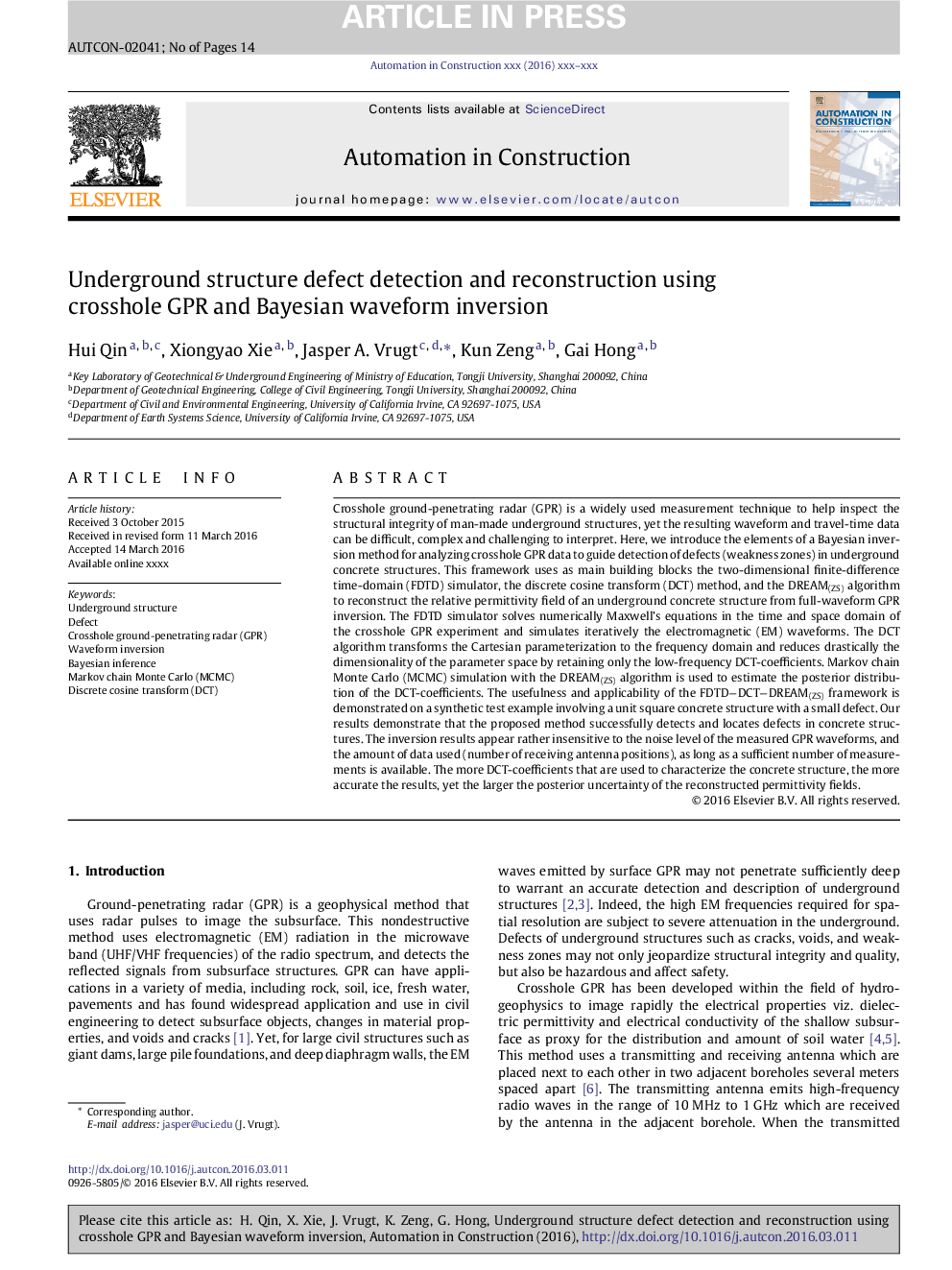| کد مقاله | کد نشریه | سال انتشار | مقاله انگلیسی | نسخه تمام متن |
|---|---|---|---|---|
| 6696301 | 502352 | 2016 | 14 صفحه PDF | دانلود رایگان |
عنوان انگلیسی مقاله ISI
Underground structure defect detection and reconstruction using crosshole GPR and Bayesian waveform inversion
دانلود مقاله + سفارش ترجمه
دانلود مقاله ISI انگلیسی
رایگان برای ایرانیان
کلمات کلیدی
موضوعات مرتبط
مهندسی و علوم پایه
سایر رشته های مهندسی
مهندسی عمران و سازه
پیش نمایش صفحه اول مقاله

چکیده انگلیسی
Crosshole ground-penetrating radar (GPR) is a widely used measurement technique to help inspect the structural integrity of man-made underground structures, yet the resulting waveform and travel-time data can be difficult, complex and challenging to interpret. Here, we introduce the elements of a Bayesian inversion method for analyzing crosshole GPR data to guide detection of defects (weakness zones) in underground concrete structures. This framework uses as main building blocks the two-dimensional finite-difference time-domain (FDTD) simulator, the discrete cosine transform (DCT) method, and the DREAM(ZS) algorithm to reconstruct the relative permittivity field of an underground concrete structure from full-waveform GPR inversion. The FDTD simulator solves numerically Maxwell's equations in the time and space domain of the crosshole GPR experiment and simulates iteratively the electromagnetic (EM) waveforms. The DCT algorithm transforms the Cartesian parameterization to the frequency domain and reduces drastically the dimensionality of the parameter space by retaining only the low-frequency DCT-coefficients. Markov chain Monte Carlo (MCMC) simulation with the DREAM(ZS) algorithm is used to estimate the posterior distribution of the DCT-coefficients. The usefulness and applicability of the FDTD-DCT-DREAM(ZS) framework is demonstrated on a synthetic test example involving a unit square concrete structure with a small defect. Our results demonstrate that the proposed method successfully detects and locates defects in concrete structures. The inversion results appear rather insensitive to the noise level of the measured GPR waveforms, and the amount of data used (number of receiving antenna positions), as long as a sufficient number of measurements is available. The more DCT-coefficients that are used to characterize the concrete structure, the more accurate the results, yet the larger the posterior uncertainty of the reconstructed permittivity fields.
ناشر
Database: Elsevier - ScienceDirect (ساینس دایرکت)
Journal: Automation in Construction - Volume 68, August 2016, Pages 156-169
Journal: Automation in Construction - Volume 68, August 2016, Pages 156-169
نویسندگان
Hui Qin, Xiongyao Xie, Jasper A. Vrugt, Kun Zeng, Gai Hong,